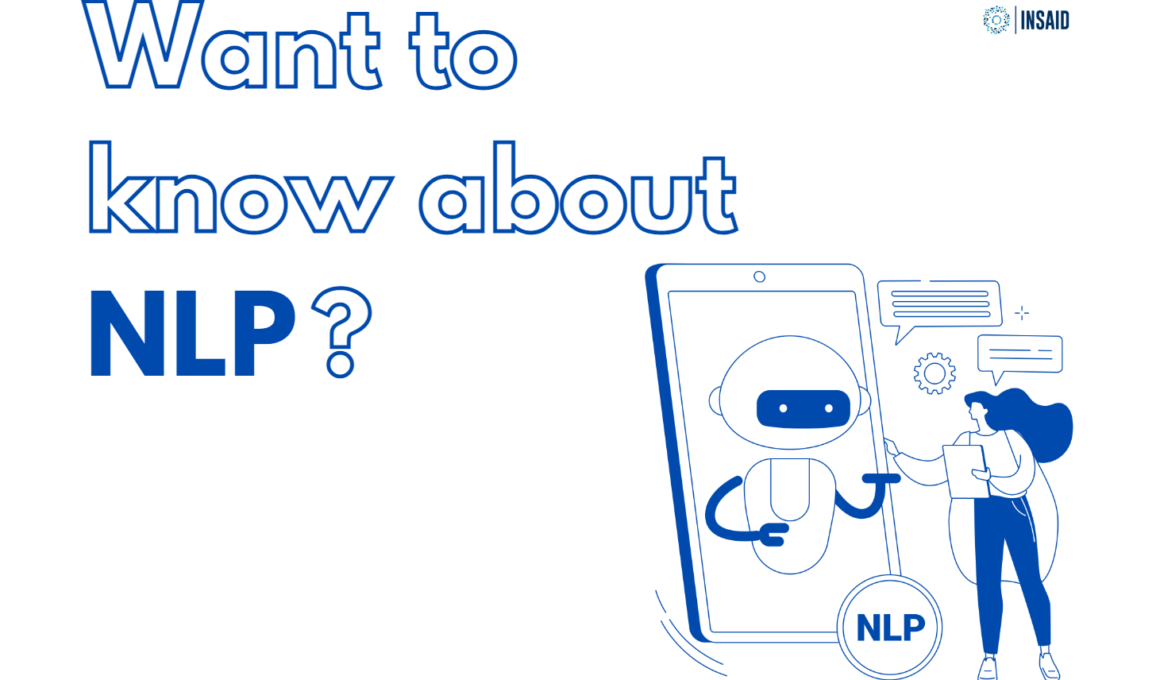Natural Language Processing (NLP) is a field of Artificial Intelligence (AI) that deals with the interaction between human languages and computers. The goal of NLP is to enable computers to understand, interpret, and generate human language in a way that is natural and similar to how humans communicate.
The Various Techniques by NLP
NLP is a broad field that encompasses a variety of techniques, including but not limited to:
- Text classification: determining the category or sentiment of a given piece of text.
- Named entity recognition: identifying and extracting specific information, such as people, places, and organisations from unstructured text.
- Part-of-speech tagging: identifying the grammatical function of each word in a sentence.
- Parsing: analysing the grammatical structure of a sentence.
- Machine translation: automatically translating text from one language to another.
- Speech recognition: converting spoken language into written text.
- Summarization: generating a brief summary of a longer piece of text.
One of the key challenges in NLP is the vast variability in human language. Different languages have different grammar rules, vocabulary, and idiomatic expressions. Additionally, the same language can be spoken and written in different dialects, registers, and styles.
This variability makes it difficult for computers to understand and generate human language in a way that is natural and accurate.
To overcome these challenges, NLP relies on a combination of linguistic and statistical techniques. Linguistic techniques involve analysing the structure and meaning of language based on a set of predefined rules and categories.
Statistical techniques, on the other hand, involve training a model on a large dataset of text and using the patterns learned from the data to make predictions about new text.
One of the most popular NLP techniques is the use of deep neural networks, which have been shown to be effective in a variety of NLP tasks. These networks are trained on a large dataset of text and can be used for tasks such as text classification, named entity recognition, and machine translation.
The Many Uses of NLP
One of the most important application of NLP is the text processing, it’s used in many different industries and scenarios, such as:
- Social media: analysing and understanding the sentiment of tweets and posts.
- Customer service: automatically answering customer questions and routing inquiries to the appropriate agent.
- Healthcare: extracting information from electronic medical records to assist with diagnosis and treatment.
- Legal: analysing legal documents to extract relevant information.
- News: automatically summarising news articles and identifying key topics.

NLP is also a key component of many conversational AI systems, such as chatbots and virtual assistants. These systems use NLP to understand and generate natural language, allowing them to interact with users in a more human-like way.
How is NLP utilised by Data Scientists?
- Text classification: NLP is used to classify and categorize large amounts of text data, such as emails, social media posts, and customer reviews.
- Sentiment analysis: NLP is used to determine the sentiment or emotion expressed in a piece of text, such as whether a customer review is positive or negative.
- Named entity recognition: NLP is used to extract specific information from text, such as the names of people, organizations, and locations.
- Text summarization: NLP is used to automatically summarize long pieces of text, such as news articles or research papers.
- Machine translation: NLP is used to translate text from one language to another, making it possible for people to communicate across language barriers.
- Language generation: NLP is used to automatically generate text, such as in chatbots or virtual assistants, by predicting the next word or phrase based on previous input.
Top 10 FAQs about NLP
Q.1 What is NLP?
NLP stands for natural language processing, a field of artificial intelligence that deals with the interaction between computers and human languages.
Q.2 How does NLP work?
NLP uses a combination of machine learning, linguistics, and computer science to process and analyse human language, such as speech and text.
Q.3 What are some common NLP tasks?
Common NLP tasks include language translation, text classification, sentiment analysis, named entity recognition, text summarization, and language generation.
Q.4 How is NLP used in real-world applications?
NLP is used in a wide range of applications, such as chatbots, virtual assistants, sentiment analysis, speech recognition, and machine translation.
Q.5 What are some popular NLP libraries and frameworks?
Popular NLP libraries and frameworks include NLTK, spaCy, Gensim, CoreNLP, and TextBlob.
Q.6 How can I get started with NLP?
To get started with NLP, it’s helpful to have a strong understanding of programming and machine learning concepts. You can also start by experimenting with existing NLP libraries and frameworks.
Q.7 What are some common NLP challenges?
Common NLP challenges include dealing with ambiguity, understanding context, and handling large amounts of data.
Q.8 What are some common NLP evaluation metrics?
Common NLP evaluation metrics include accuracy, precision, recall, and F1-score.
Q.9 How is NLP related to other fields such as AI, Machine Learning and Deep Learning?
NLP is a subfield of AI, which deals with the interaction between computers and human languages. It is closely related to machine learning and deep learning, which are used to train NLP models.
Q.10 How can NLP help you?
NLP can help you by giving you approaches to get into the best emotional state for a particular task, and by giving you the most useful beliefs and most helpful strategies to achieve whatever you want.
Natural Language Processing vs Natural Language Understanding
- NLP (Natural Language Processing) and NLU (Natural Language Understanding) are related but distinct fields within Artificial Intelligence (AI) that deal with the interaction between computers and human languages.
- NLP focuses on the ability of a computer to process and analyze human language, such as speech and text, while NLU focuses on the ability of a computer to understand the meaning of the language.
- NLP tasks include language translation, text classification, sentiment analysis, named entity recognition, text summarization, and language generation. NLU tasks include language understanding, dialogue management, and intent recognition.
- NLP is considered as a low-level process that enables the machine to understand the input language, on the other hand, NLU is a high-level process that enables the machine to understand the meaning behind the input language.
In conclusion, NLP is a rapidly growing field that is making it possible for computers to understand and generate human language in a way that is natural and accurate.
The techniques and technologies developed in NLP are being applied in a wide range of industries and scenarios, from customer service and healthcare to social media and legal system.
As the field continues to evolve, we can expect to see even more impressive developments in the future.
 Pin
PinRemember to check out our collection of Data Science resources to keep you learning and practicing, and you’ll be well on your way to having a successful career in data science!






